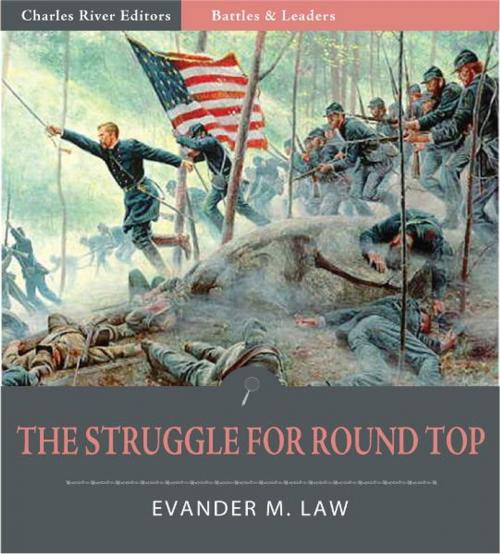Battles and Leaders of the Civil War: The Struggle for Round Top (Illustrated)
Nonfiction, History, Americas, United States, Civil War Period (1850-1877), Military, 19th Century| Author: | Evander Law | ISBN: | 9781619829039 |
| Publisher: | Charles River Editors | Publication: | January 18, 2012 |
| Imprint: | Language: | English |
| Author: | Evander Law |
| ISBN: | 9781619829039 |
| Publisher: | Charles River Editors |
| Publication: | January 18, 2012 |
| Imprint: | |
| Language: | English |
Without question, the most famous battle of the Civil War took place outside of the small town of Gettysburg from July 1-3, 1863. Over those three days, nearly 8,000 would die, over 30,000 would be casualties, and the most famous attack of the war, Picketts Charge, would fail Robert E. Lees Army of Northern Virginia. The South would go on to lose the war, and when it did, the importance of Gettysburg as one of the high tide marks of the Confederacy became apparent, making the battle all the more important. Former Confederate comrades like James Longstreet and Jubal Early would go on to argue who was responsible for the loss at Gettysburg in the following decades. The reputation of Gettysburg remained solid after the war, but interest in Little Round Top and its impact on the battle in Day 2 was heavily revived as a result of Michael Sharaas book Killer Angels, a very popular fictional account of the Battle of Gettysburg that hewed closely to what happened. When Sharaas book was turned into the movie Gettysburg, the popularity of the movie led to renewed interest in the 20th Maines actions on Day 2 at Gettysburg as the far left unit on the Union armys flank. There is still debate over whether Colonel Chamberlain ordered a charge down Little Round Top when the regiment ran out of gunpowder or whether it was uncoordinated. Either way, nobody argues that the unit served with distinction, and nobody questions the importance of the Union holding onto that high ground. Historians were less kind to Evander M. Law, brigadier-general who took command of the division on Day 2 when John Bell Hood was wounded. Law has been criticized for failing to coordinate the division, and failing to appoint a new brigade commander when he took over the division. Since Law did not writer an official report, his only remarks about his critical role came in the account he wrote after the war, which was eventually published in the famous Battles & Leaders series. This edition of Battles & Leaders of the Civil War: The Struggle for Round Top is specially formatted with a Table of Contents and pictures of Gettysburgs important commanders.
Without question, the most famous battle of the Civil War took place outside of the small town of Gettysburg from July 1-3, 1863. Over those three days, nearly 8,000 would die, over 30,000 would be casualties, and the most famous attack of the war, Picketts Charge, would fail Robert E. Lees Army of Northern Virginia. The South would go on to lose the war, and when it did, the importance of Gettysburg as one of the high tide marks of the Confederacy became apparent, making the battle all the more important. Former Confederate comrades like James Longstreet and Jubal Early would go on to argue who was responsible for the loss at Gettysburg in the following decades. The reputation of Gettysburg remained solid after the war, but interest in Little Round Top and its impact on the battle in Day 2 was heavily revived as a result of Michael Sharaas book Killer Angels, a very popular fictional account of the Battle of Gettysburg that hewed closely to what happened. When Sharaas book was turned into the movie Gettysburg, the popularity of the movie led to renewed interest in the 20th Maines actions on Day 2 at Gettysburg as the far left unit on the Union armys flank. There is still debate over whether Colonel Chamberlain ordered a charge down Little Round Top when the regiment ran out of gunpowder or whether it was uncoordinated. Either way, nobody argues that the unit served with distinction, and nobody questions the importance of the Union holding onto that high ground. Historians were less kind to Evander M. Law, brigadier-general who took command of the division on Day 2 when John Bell Hood was wounded. Law has been criticized for failing to coordinate the division, and failing to appoint a new brigade commander when he took over the division. Since Law did not writer an official report, his only remarks about his critical role came in the account he wrote after the war, which was eventually published in the famous Battles & Leaders series. This edition of Battles & Leaders of the Civil War: The Struggle for Round Top is specially formatted with a Table of Contents and pictures of Gettysburgs important commanders.















